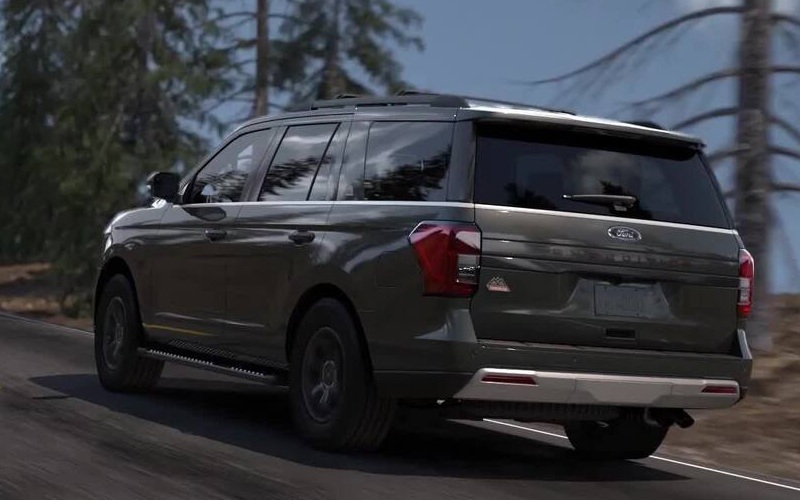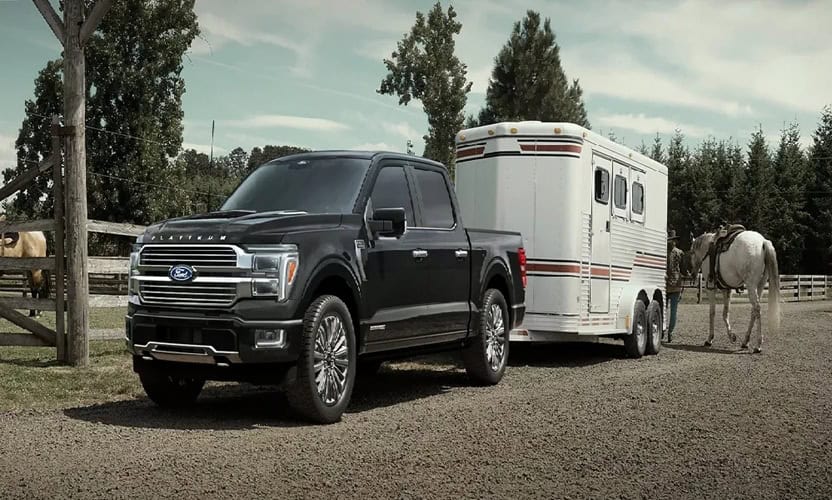The Ford Explorer continues to define the midsize SUV category, combining cutting-edge technology, versatile performance, and refined design. Since its introduction in 1990, the Explorer has undergone a remarkable evolution in its drivetrain technology, transitioning from a rugged truck-based platform to a sophisticated crossover with advanced capabilities.

First Generation (1991-1994): The Foundation of Capability
The original Ford Explorer established itself as a versatile family vehicle with genuine off-road credentials. Built on a truck platform shared with the Ford Ranger, this first-generation model featured a traditional part-time four-wheel drive system with a two-speed transfer case. This mechanical setup required manual shifting between two-wheel drive and four-wheel drive modes.
The drivetrain utilized a solid rear axle with leaf springs, providing durability but sacrificing some on-road comfort. Most models came equipped with a shift-on-the-fly system that allowed drivers to transition from rear-wheel drive to four-wheel drive high range without stopping, though four-wheel drive low range still required the vehicle to be stationary during engagement.
This configuration established the Explorer as more capable than most family vehicles of its time, allowing owners to confidently tackle snowy conditions and light off-road trails while maintaining reasonable on-road manners.
Second Generation (1995-2001): Refinement with Capability
The second-generation Explorer maintained its body-on-frame construction but introduced significant drivetrain refinements. Ford continued to offer part-time four-wheel drive systems but added the optional “Control Trac” system—a more sophisticated setup that automatically engaged the front wheels when slippage was detected at the rear.
This automatic four-wheel drive system represented an important advancement, allowing the vehicle to operate in rear-wheel drive during normal conditions for better fuel efficiency while providing four-wheel drive traction when needed without driver intervention. The traditional manually selectable four-wheel drive remained available for those who preferred direct control.
The Explorer retained its body-on-frame construction and solid rear axle, but suspension tuning improved on-road comfort without significantly compromising off-road capability. This generation struck a balance between the rugged utility expected from an SUV and the comfort increasingly demanded by families using these vehicles as daily drivers.
Third Generation (2002-2005): Independent Innovation
The third-generation Explorer marked a significant advancement in drivetrain technology while still maintaining body-on-frame construction. The most notable change was the adoption of an independent rear suspension—a first for Ford trucks and American-market SUVs of this class at the time.
This new rear suspension design replaced the traditional solid axle with a fully independent configuration featuring half-shafts and more sophisticated geometry. While still offered with rear-wheel drive as standard, this generation introduced both part-time four-wheel drive and full-time all-wheel drive options, providing buyers with choices based on their needs.
The all-wheel drive system operated continuously, automatically distributing power between front and rear axles as needed without driver intervention. This development significantly improved on-road handling characteristics and ride comfort while maintaining reasonable off-road capability for a family SUV.
Fourth Generation (2006-2010): Platform Refinement
The fourth-generation Explorer continued with the body-on-frame construction and independent rear suspension of its predecessor but further refined the drivetrain options. Ford introduced its AdvanceTrac stability control system with Roll Stability Control, which worked in conjunction with the all-wheel drive system to improve safety and performance in challenging conditions.
This generation offered a more sophisticated automatic four-wheel drive system that included terrain management features, allowing drivers to select modes optimized for different conditions such as snow, sand, or mud. The system would adjust throttle response, shift points, and power distribution to maximize traction in these various scenarios.
While still capable off-road, this generation reflected the market shift toward prioritizing on-road performance and safety, with the drivetrain technology increasingly focused on enhancing everyday usability rather than extreme trail capability.
Fifth Generation (2011-2019): The Crossover Transformation
The fifth generation represented the most significant change in the history of the Explorer, abandoning the traditional body-on-frame construction for a unibody crossover platform. This fundamental shift transformed the Explorer drivetrain philosophy from a truck-based design to a car-based system with full-time all-wheel drive rather than part-time four-wheel drive.
The standard configuration became front-wheel drive—a first for the Explorer—with all-wheel drive available as an option. This new platform utilized a fully independent suspension at all four corners, prioritizing on-road comfort and handling over extreme off-road capability.
The available Terrain Management System evolved to offer four selectable modes: Normal, Mud/Ruts, Sand, and Snow. Each mode optimized the vehicle’s electronic systems, including throttle response, transmission shift points, and power distribution between the wheels to maximize performance in different conditions.
This generation reflected changing consumer preferences, acknowledging that most SUV owners primarily drive on pavement and rarely venture off-road. The drivetrain prioritized efficiency, on-road stability, and all-weather capability rather than traditional off-road prowess.
Sixth Generation (2020-Present): Advanced Technology Integration
The current generation Explorer, introduced for 2020 and refined, returned to a rear-wheel drive architecture but maintained the unibody construction of its predecessor. This platform change improved weight distribution and towing capability while maintaining the on-road comfort expected of a modern crossover.
The Explorer offers intelligent all-wheel drive systems that continuously monitor conditions and adjust power distribution accordingly. Unlike the mechanical systems of early generations, this electronic system can precisely control power delivery to each wheel, maximizing traction in all conditions.
The current Terrain Management System has evolved to include seven drive modes on all-wheel drive models: Normal, Trail, Deep Snow/Sand, Slippery, Sport, Tow/Haul, and Eco. Each mode adjusts up to 12 different vehicle systems, including throttle response, transmission shift patterns, steering effort, and stability control parameters.
While the Active trim comes standard with rear-wheel drive, all-wheel drive is available across all trim levels in the latest lineup. The system can disconnect the front driveline when not needed, improving fuel efficiency during normal driving conditions while providing immediate traction when wheel slip is detected.
2025 Explorer: Drivetrain Specifications
The Ford Explorer continues with the rear-wheel drive architecture introduced in 2020, offering all-wheel drive as an option across all trim levels. The base 2.3-litre EcoBoost four-cylinder engine delivers 300 horsepower and 310 lb-ft of torque, while the available twin-turbo 3.0-litre V6 churns out 400 horsepower and 415 lb-ft of torque in the ST model.
Power is routed through a 10-speed automatic transmission in all configurations, providing smooth shifts and optimal gear selection for varying driving conditions. The transmission works in concert with the Terrain Management System to adjust shift patterns based on selected drive modes.
The latest model discontinues the hybrid powertrain option previously available, focusing instead on the refined EcoBoost engines. The all-wheel drive system features intelligent monitoring that can send up to 100 percent of available torque to either the front or rear axle as needed, with the ability to distribute torque side-to-side at the rear axle for enhanced handling and traction.
When properly equipped with the Class III Trailer Tow Package (standard on all models), the Explorer can tow up to 2,268 kg, making it suitable for hauling boats, campers, or trailers with confidence.
Technology Integration in Modern Explorer Drivetrains
The Explorer drivetrain benefits from sophisticated electronic controls that optimize performance across varying conditions. The system continuously monitors wheel slip, vehicle speed, throttle position, steering angle, and numerous other parameters to make real-time adjustments to power distribution.
This intelligence extends to features like Hill Descent Control, which automatically modulates brake pressure to maintain a constant speed when navigating steep declines off-road. The system allows drivers to focus on steering while the vehicle’s electronics handle braking for each wheel individually.
The Explorer also offers an updated version of the Ford Blue Cruise system, though media testing has revealed some limitations in its functionality compared to the more advanced system found in the latest Expedition. This hands-free highway driving assistant represents the cutting edge of drivetrain and vehicle control technology, though it still requires driver supervision.
2025 Ford Explorer: The Verdict
The Ford Explorer drivetrain represents the culmination of over three decades of evolution, transitioning from a rugged, truck-based four-wheel drive system to a sophisticated, electronically controlled all-wheel drive setup optimized for on-road performance and all-weather capability.
This evolution mirrors broader market trends, as SUVs have increasingly become everyday family vehicles rather than dedicated off-road machines. The current Explorer strikes an excellent balance between the capability expected of an SUV and the comfort, efficiency, and technology demanded by modern consumers.
Whether equipped with the standard rear-wheel drive or optional all-wheel drive, the Explorer delivers confident performance across a wide range of driving conditions. The integration of advanced electronic controls enhances both capability and safety, allowing drivers to tackle challenging situations with greater confidence than ever before.
For those seeking a versatile three-row SUV that combines on-road refinement with genuine capability when the pavement ends, the Explorer drivetrain provides a compelling solution that builds upon the model’s rich heritage while embracing modern technology.
Five Facts About Ford Explorer Drivetrains
- The third-generation Explorer (2002-2005) was the first American-made SUV to feature a fully independent rear suspension, a revolutionary change that dramatically improved on-road handling while maintaining off-road capability.
- When the Explorer switched to a front-wheel drive-based platform in 2011, it could detect wheel slip and transfer 100 percent of available torque to either the front or rear axle in less than 100 milliseconds—faster than the blink of an eye.
- The current Explorer all-wheel drive disconnect feature can seamlessly transition between rear-wheel drive and all-wheel drive modes up to 50 times per second, constantly evaluating driving conditions to optimize efficiency and traction.
- The Explorer ST’s drivetrain includes specially calibrated steering and suspension systems that can detect when the vehicle is cornering and automatically optimize power distribution to improve handling dynamics.
- The original 1991 Explorer manual transfer case required approximately 5 kg of force to shift between drive modes, while the latest model’s electronic system requires just the touch of a button and makes the transition in milliseconds.
Is the 2025 Ford Explorer drivetrain right for you?
How important is fuel efficiency in your SUV purchase decision?
- The rear-wheel drive configuration of the base Explorer Active trim offers the best fuel efficiency in the lineup. For those who primarily drive in urban areas with good road conditions, this drivetrain configuration provides a compelling balance of performance and economy.
Do you frequently drive in challenging weather conditions?
- The available all-wheel drive system across all trim levels provides excellent traction and stability in snow, rain, and light off-road conditions. The system’s ability to automatically engage and distribute torque makes it well-suited for regions with variable weather patterns.
How do you plan to use your Explorer—primarily on-road or occasional off-road adventures?
- While the modern model excels on paved roads, its Terrain Management System with multiple drive modes allows it to handle a variety of off-road conditions. If you plan to venture off the beaten path regularly, the all-wheel drive configuration with the Terrain Management System provides versatility without sacrificing on-road comfort.
Are you interested in the sportier driving dynamics of the ST model?
- The ST features the twin-turbo 3.0-litre V6 and a specially tuned all-wheel drive system that delivers more performance-oriented handling. This configuration provides a more engaging driving experience for enthusiasts who still need the practicality of a three-row SUV.
How much do you value drivetrain simplicity versus advanced technology?
- Modern Explorer drivetrains incorporate sophisticated electronic controls that optimize performance and efficiency. If you prefer simpler, more mechanical systems with fewer potential electronic issues as the vehicle ages, you might consider other options or older Explorer generations.
*Disclaimer: Content contained in this post is for informational purposes only and may include features and options from US or international models. Please contact the dealership for more information or to confirm vehicle, feature availability.*



